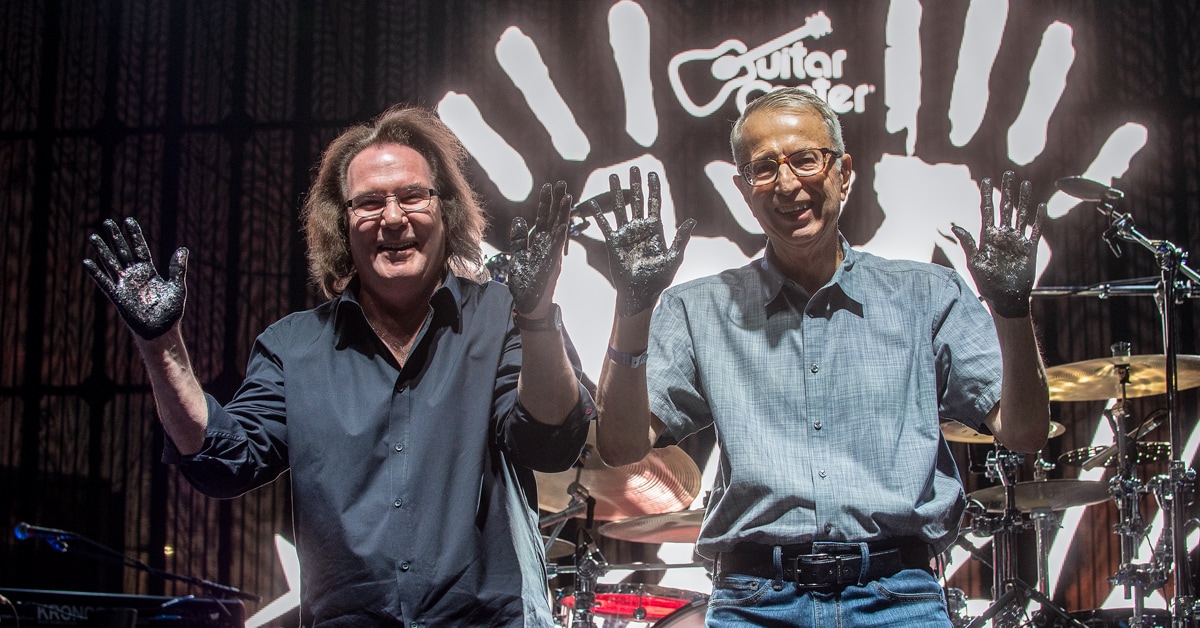In 1973, Drum Workshop was a small teaching studio in Santa Monica, and John Good was a frustrating student. He showed up to his lessons with his teacher Don Lombardi, who owned the studio, but he clearly wasn’t practicing. Progress was slow. For any other student-teacher combo, things may have ended there. But for Lombardi and Good, those failed lessons were the beginning of something much bigger.
Bonding over their shared love of drums—and shared complaints about how they were designed—they began to tinker with drum hardware. They designed an innovative throne, then pedals, then expanded to entire drum sets, all meticulously crafted by hand. In the process, they raised the standard for drums and percussion gear forever.
Get to know Don Lombardi and John Good, co-founders of DW Drums.
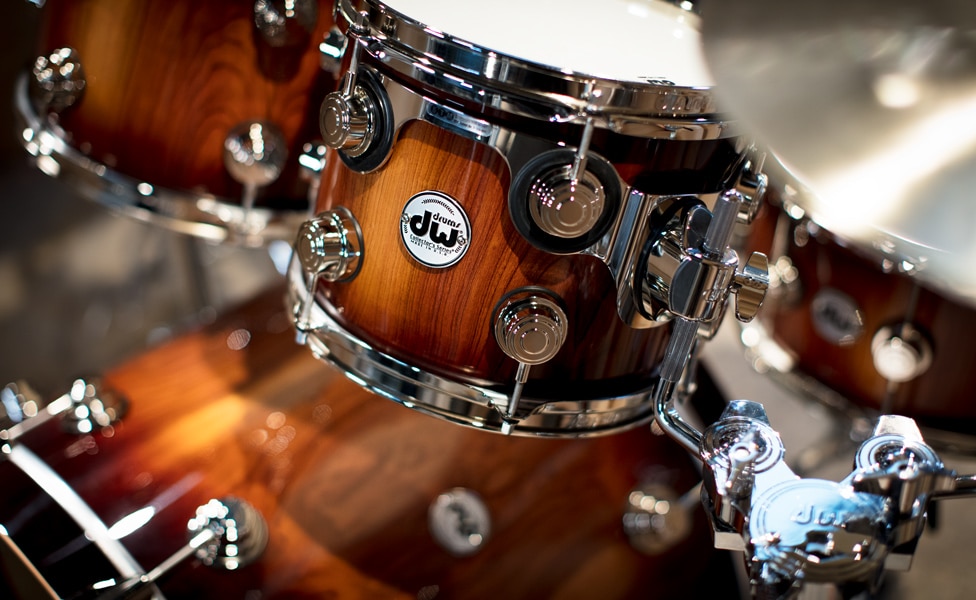
Pictured: DW Collector's Series Pure Almond 5-Piece Shell Pack
Don Lombardi first became fascinated with drums as a child, when his father took him to see a big band performance with Buddy Rich behind the kit.
“There was no doubt in my mind that that’s what I wanted to do,” says Lombardi, who began taking drum lessons at the age of nine. By 16, he was studying with Nick Ceroli, one of Los Angeles’ hot studio drummers, while beginning to teach at local stores himself. A few years later, the rigorous mentorship of jazz drummer Freddie Gruber would shape Lombardi’s technique even further.
By the time Lombardi decided to open his own Santa Monica teaching studio in 1972—a place named Drum Workshop—he was 26 years old and teaching at three different music stores around L.A. Six nights a week, he’d play a circuit of clubs. He assumed that he’d spend the rest of his life in this way: teaching and playing.
Two of his students helped steer him down a different path.
There was a student who changed things at Drum Workshop, the son of the owner of a small drum company named Camco. It was through this student that the fortuitous opportunity to purchase the Camco dies and molds arose. Lombardi seized it, marking the beginning of a more focused foray into manufacturing.
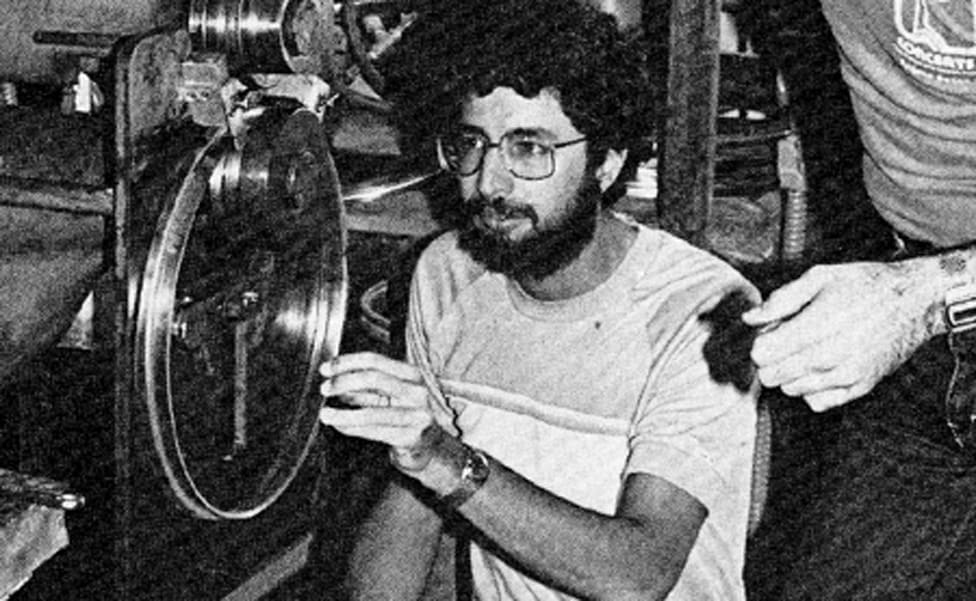
Pictured: Don Lombardi in the DW Drums factory
Another student would go on to become Lombardi’s right-hand man at DW, most notably as his resident drum designer. In 1973, a 17-year-old aspiring rock star named John Good was flipping through the phone book in search of a place that could help him become a better drummer. A tiny print advertisement caught his eye: Drum Workshop. When he dialed the number, the owner, Don Lombardi, welcomed him over to the Santa Monica teaching studio.
“I got there and [Don] just said, ‘Show me what you got, kid!’” Good recalls, many years later. “I sat down and … I was terrible.”
Despite Lombardi’s success in mentoring students who went on to have successful careers, this student just wasn’t progressing. After three months of lessons that were not rigorously practiced for, he broke the news. “He placed his hand on my shoulder and told me, ‘You are never going to be one of those guys,’” says Good.
If the exchange sounds harsh, it wasn’t meant to be. In fact, Lombardi's honesty would prove to be “a magical, pivotal moment,” one of the best things that ever happened to Good. It marked the beginning of DW’s history as a pioneering and hugely influential drum equipment operation.
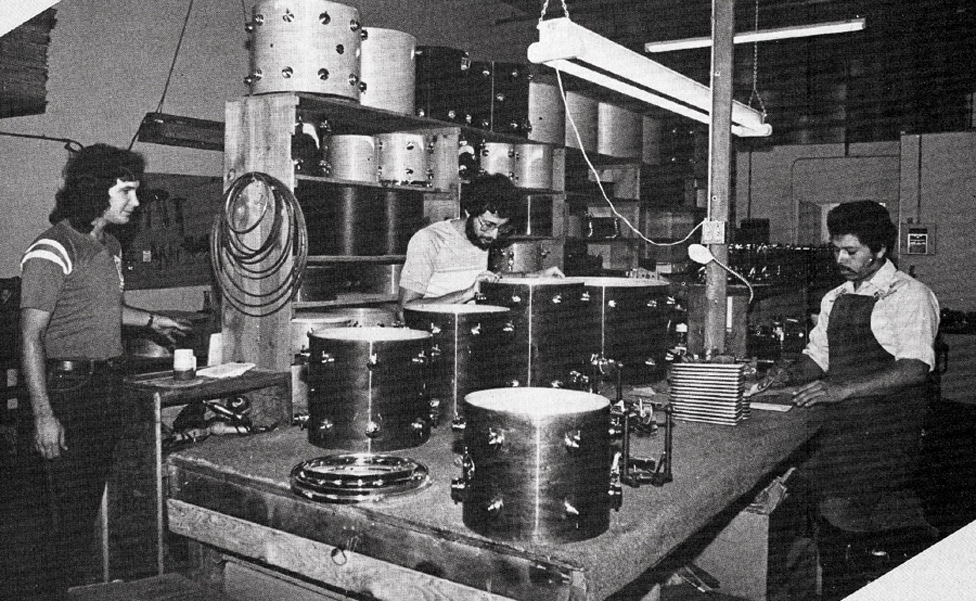
Pictured: John Good and Don Lombardi in the DW Drums factory
Good shared Lombardi’s obsession with elevating the instrument itself. He helped Lombardi create a height-adjustable trap seat he’d dreamt up in his spare time, beginning a partnership still flourishing today. At night, they’d close up the teaching studio, pack all the drums away and bring out tables to work on. They asked the same two questions, over and over: “Why doesn’t this work?” and “How can we make it better?”
What the new partners had recognized during those initial lessons together was a shared passion for discussing how to improve drum sets and how to elevate the art of drum making to new and uncharted heights. The duo wanted to design things that weren’t being made. After the successful development of the height-adjustable trap seat, they focused their energies on the next innovation, a nylon-strap bass drum pedal. Though the response to their creations was overwhelmingly positive, most of those early years were spent trying to squeeze by on no money.
For those early years, Lombardi and Good focused on crafting the highest-quality drum hardware they could, and only began experimenting with drum kits for fun. Each drum shell was made one at a time, with the utmost attention to detail. The bearing edges were hand-trued, the precision and materials unparalleled in their excellence.
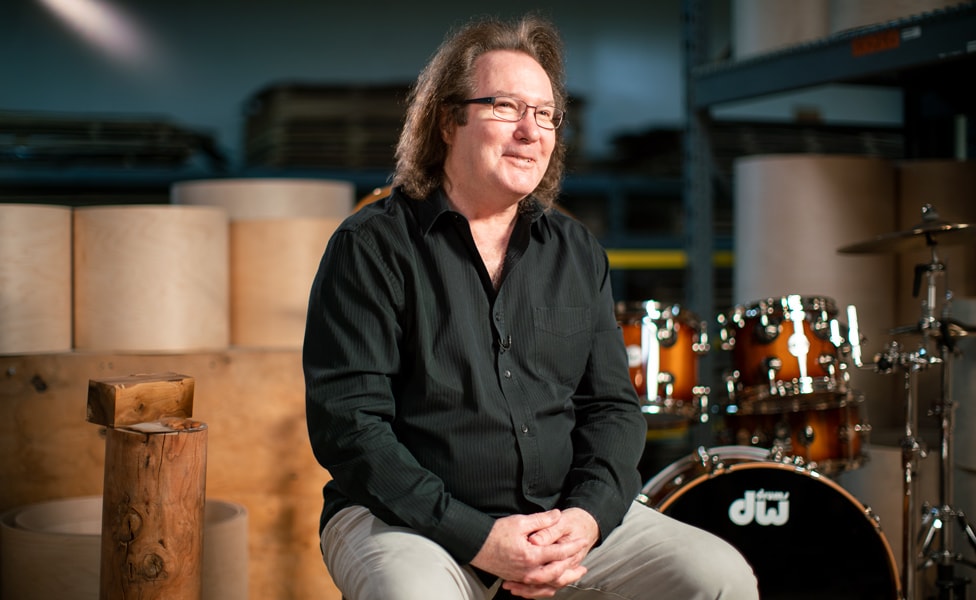
Pictured: The "Wood Whisperer" John Good
Through his experiments at Drum Workshop, Good became an expert at cutting bearing edges that drastically improved the sound of the drum. Good helped develop DW’s “Timbre Matching” approach—patented in 1997—which improved the balance of their painstakingly hand-crafted kits. The resulting sound was so superior in quality, it would go on to reshape the entire industry’s approach to drum design. It was a winning formula that transfixed drummers. In 1983, DW patented their first widely adopted double-pedal design, another concept Good helped shape into reality.
In tandem with his natural gift for tuning, Good’s wide-ranging skills attracted the attention of studio musicians from all over the Los Angeles area, and he became one of the most in-demand drum techs in the world. While Lombardi held down the fort in California, Good spent the 1980s venturing out on the road to assist a long list of heavy hitters, including Earth, Wind & Fire, Frank Zappa, Madonna, Elton John and Michael Jackson. By the time he and Lombardi decided to seriously pursue the growth and development of DW in the mid-1980s, integrating all of those on-the-job experiences proved invaluable.
One drummer their innovations made a huge impression on was a young Tommy Lee, who had come out to test one of DW’s pedals six months before Mötley Crüe’s Dr. Feelgood was recorded. “We had a drum set next to John’s desk that Tommy started playing, and he just loved it. He played on it and played on it for hours,” recalls Lombardi. “I still have a photocopy of the $1,100 check he wrote us for it, but nobody knew he was using a DW kit. He was endorsing Pearl.”
![]()
Pictured: Earth, Wind & Fire Icon Series Snare
Despite the rave reviews from musicians, including Chicago’s Danny Seraphine, who signed on as a Drum Workshop endorsee in the late 1980s, Lombardi approached the 1990 NAMM show cautiously. “It was the first time we were presenting ourselves as a full-line drum company where we had pedals, stands, hardware and now drum sets. We expected to sell maybe 15 drum kits,” he says. “And the number we came in with at the end of the first day was 60 or 70.”
More genre-expanding innovations would follow: True-Pitch Tuning System in 1995, increasing a drummer’s tuning range; 9000 Series pedals in 2003, with a free-floating rotor-drive system spring, adjustable cam and ball bearing hinge for more fluid action and increased power; and X Shell Technology in 2008, a new approach of cross-laminating veneers at a 45-degree angle that not only ensured shell strength, but improved the low frequencies produced.
To tell Don Lombardi’s story makes it all sound effortless. Hindsight makes it clear that he understood the need for custom high-quality kits in the market, met the demand with something spectacular, and never sacrificed the quality. While the struggle was real, with every challenge an opportunity for invention, the journey and successes are a testament to his openness to learning.
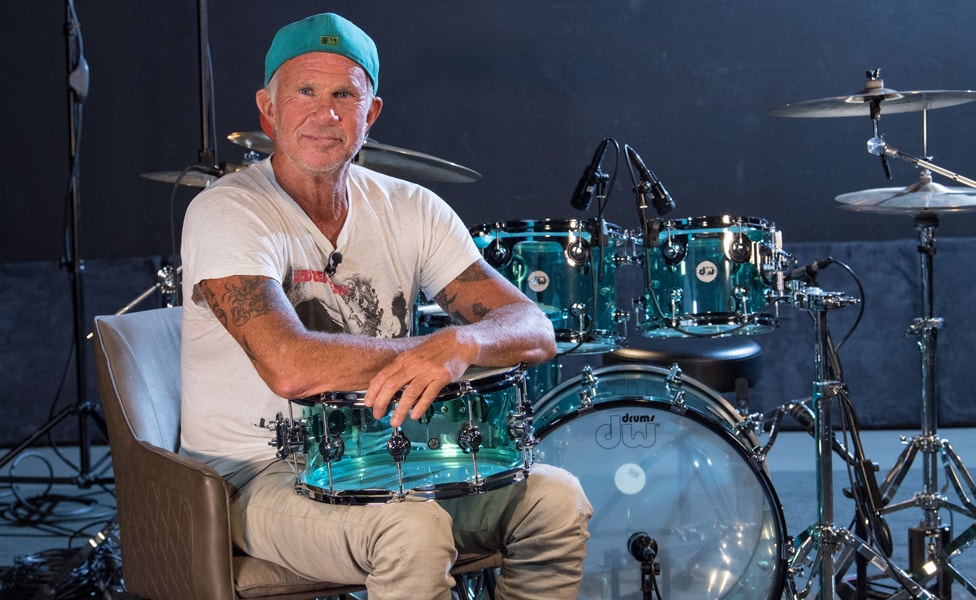
Pictured: Chad Smith with the DW Design Series Acrylic Shell Pack and Snare in Sea Glass
His dedication as a student and teacher also stays alive in his work with Drum Channel, the online platform he founded where some of the best drummers and educators in the world come together to teach and perform for users. It also serves as an online anthology, honoring the great artists who came before him. “I want to memorialize their methods as they taught them, and continue to pass down that knowledge,” he says.
Prior to the pandemic, Good spent more recent years traveling the world in search of the rarest, most exquisite wood. Perhaps most meaningful to him was the 500-year-old birdseye maple he transformed into a highly covetable limited-edition drum set. For 100 years, the wood had remained sunken at the bottom of Lake Superior, not far from the Michigan hometown where Good first played a sparkly red Sears, Roebuck & Company drum set as a 10-year-old kid.
When asked where in the world his obsession will take him next, Good’s enthusiasm is palpable. “God only knows,” he exclaims, with a laugh.
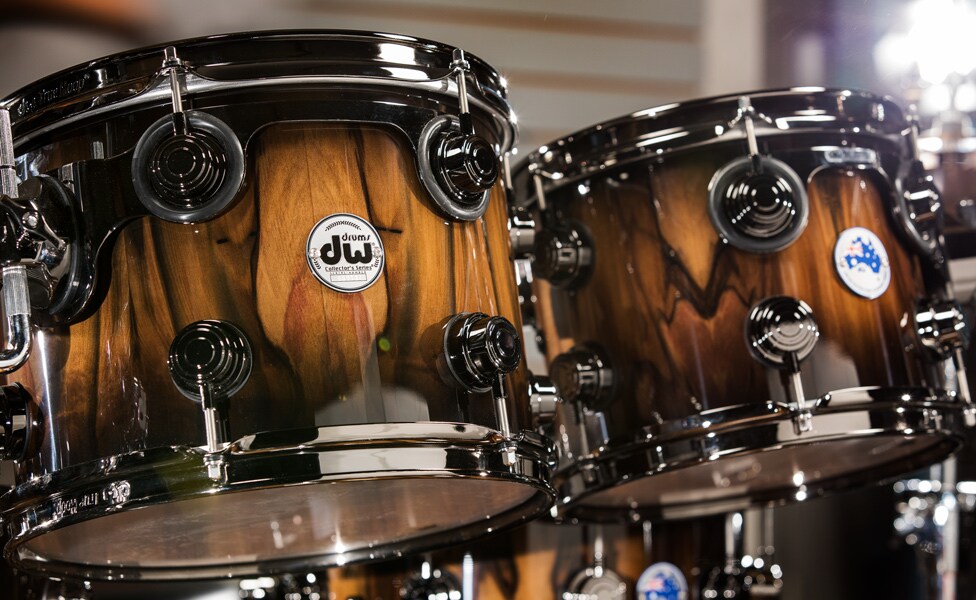
Pictured: DW Collector Series Limited Edition Pure Tasmanian Timber Shell Pack
In 2018, Guitar Center had the great honor of inducting both these legends into the Guitar Center Rockwalk during the celebration of the reopening of our flagship store in Hollywood. More recent additions to their lineup include Exotic Collector’s Kits made from purpleheart and almond; eye-catching Icon snares, each spec’d to match the drum legend they honor, such as Neil Peart, Dave Grohl or Roger Taylor, and featuring laser-cut, hand-inlayed exotic wood veneers; the extremely limited and dynamic True Cast bronze snare drum; and the Sea Glass acrylic shell pack, an ode to the surf in Santa Monica, California where their whole journey started. Now, after a half century in collaboration, Lombardi, Good and their partners at Drum Workshop continue to produce drum products endorsed by many of the world’s top artists, while developing new designs to inspire the next generation. We can’t wait to see what’s next.
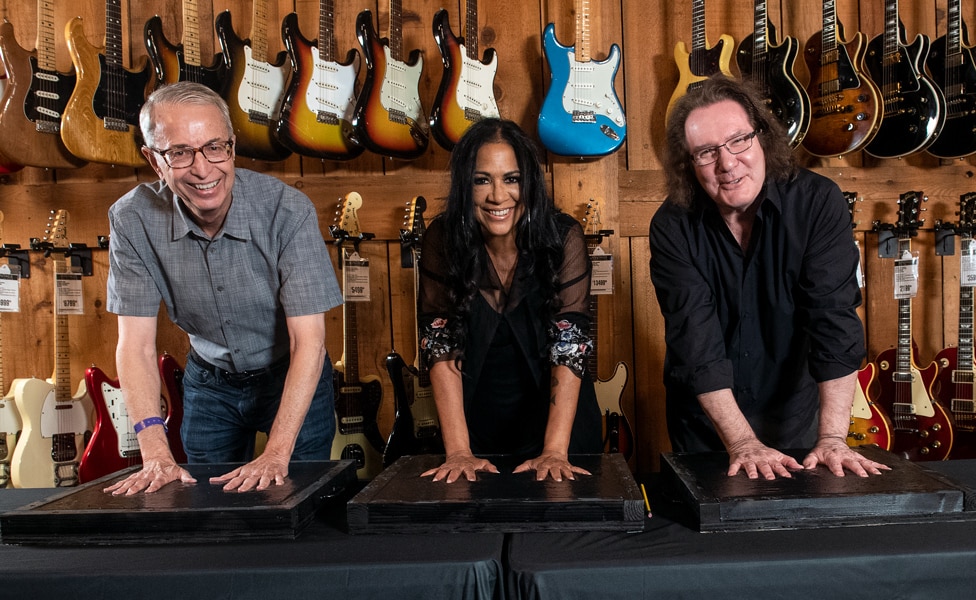
Pictured: Don Lombardi, Sheila E. and John Good at their Rockwalk induction










